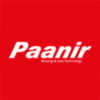Skip to content
Layers for Sliding Contact Bearing
.
According to the number of the main functional bearing layers the bearings may be mono-metal (solid), bi-metal, tri-metal or multi-layer. Most of engine bearings are either bi-metal or tri-metal.
Typical bearings layers and structures are presented in below:
-
Steel back supports bearing structure, provides its rigidity and press fit under severe conditions of increased temperature and cycling loads.
-
Intermediate layer (lining)is a layer located between the steel back and the overlay.
-
Nickel diffusion barrier (nickel dam)is deposited between the intermediate layer and the overlay in order to prevent a migration of tin from the overlay into the intermediate material (copper).
-
-
Non-plated bearing material is referred to mono-metal (solid) and bi-metal bearings. No overlays are deposited on the surface of the material.
-
Tin flash is a very thin (max. 0.00004”/1µm) layer of tin applied to the overall bearing surface.


